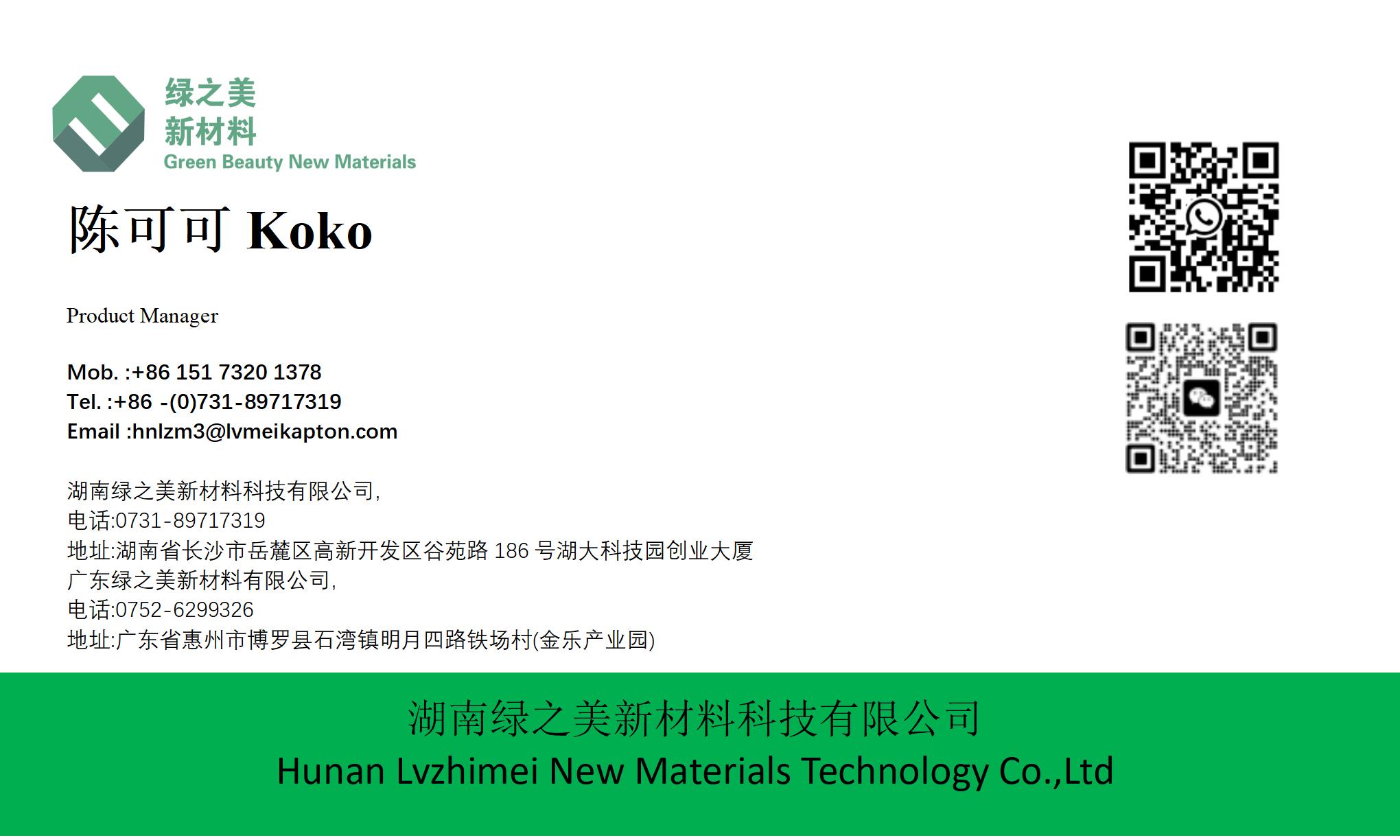hnlzm@lvmeikapton.com
+86 13787123465


Hunan Lvzhimei New Material Technology Co., Ltd.


NameDescriptionContent
Which Adhesive PET Material High Temperature Tape is Best for Aerospace Applications? | https://www.lvmeikapton.com/
Source:
|
Author:Koko Chan
|
Published time: 2025-04-29
|
123 Views
|
Share:
In the aerospace industry, materials must withstand extreme temperatures, mechanical stress, and electrical challenges. High-temperature tapes play a crucial role in protecting components, ensuring electrical insulation, and maintaining structural integrity. Polyethylene Terephthalate (PET) and Polyimide (PI) tapes are two prevalent options, each offering unique advantages. This article comparatively analyzes their performance, focusing on PET’s cost-effectiveness, lightweight properties, and Lvmeikapton PI tape’s superior electrical insulation.
Which Adhesive PET Material High Temperature Tape is Best for Aerospace Applications?
IntroductionIn the aerospace industry, materials must withstand extreme temperatures, mechanical stress, and electrical challenges. High-temperature tapes play a crucial role in protecting components, ensuring electrical insulation, and maintaining structural integrity. Polyethylene Terephthalate (PET) and Polyimide (PI) tapes are two prevalent options, each offering unique advantages. This article comparatively analyzes their performance, focusing on PET’s cost-effectiveness, lightweight properties, and Lvmeikapton PI tape’s superior electrical insulation.
Material Properties Comparison
PET High Temperature Tape
PET tape, fabricated from polyester film, exhibits notable characteristics:
1.
Temperature Resistance: Capable of enduring temperatures up to 250°C, suitable for environments with moderate thermal stress.
2.
Adhesion Strength: Offers reliable bonding with 500 g/25mm adhesion, ensuring secure fixation.
3.
Lightweight: Density of ≈1.4 g/cm³ reduces payload weight, aligning with aerospace lightweighting strategies.
4.
Cost-Effectiveness: Lower production costs compared to PI, making it economically viable for large-scale applications.
5.
Chemical Resistance: Resistant to acids, solvents, and oils, suitable for harsh chemical environments.
Technical Specifications:
Property | Value |
Max Temperature | 250°C |
Adhesion | 500 g/25mm |
Dielectric Strength | 4 kV |
Lvmeikapton PI Tape
Lvmeikapton PI tape, based on polyimide film, stands out for its advanced properties:
1.
Extreme Temperature Resistance: Withstands temperatures up to 300°C, ideal for high-heat applications like engine compartments.
2.
Electrical Insulation: Dielectric strength of 6 kV ensures superior protection against electrical breakdown.
3.
Dimensional Stability: Minimal thermal expansion (≤1% at 300°C) maintains structural integrity.
4.
Chemical & Radiation Resistance: Resistant to corrosive chemicals and UV/γ radiation, suitable for aerospace exposure.
5.
Flexibility: Thin film (20-125 μm) facilitates application in tight spaces.
Technical Specifications:
Property | Value |
Max Temperature | 300°C |
Adhesion | 600 g/25mm |
Dielectric Strength | 6 kV |
Aerospace Application Analysis
PET Tape Applications
PET tape’s strengths make it suitable for:
1.
Thermal Management:
○
Insulating wiring harnesses in cabin systems (up to 200°C).
○
Masking components during painting processes.
2.
Structural Bonding:
○
Adhering lightweight composites in non-critical zones.
○
Sealing gaskets and panels for moisture resistance.
3.
Cost-Optimized Solutions:
○
Bulk applications where high dielectric strength isn’t paramount (e.g., cargo bay insulation).
Lvmeikapton PI Tape Applications
Lvmeikapton PI tape excels in critical systems:
1.
Avionics Protection:
○
Shielding high-voltage cables in flight control units (6 kV insulation).
○
Wrapping motor coils in landing gear actuators (300°C endurance).
2.
Engine Components:
○
Insulating turbine sensors and combustor linings.
3.
Spacecraft Systems:
○
Protecting solar panels from thermal cycling (-200°C to 250°C) and radiation.
Case Study: NASA’s SpaceX Crew Dragon used Lvmeikapton tape to insulate electrical interfaces in its thruster systems, preventing arcing at altitudes exceeding 100 km.
Cost-Benefit Tradeoff
While PET tape offers a 30-50% cost reduction compared to PI, Lvmeikapton’s performance offsets its premium price in mission-critical scenarios. A cost analysis for a typical aerospace project might show:
●
PET: Ideal for $1-5M projects with moderate thermal requirements (e.g., commercial airliner wiring).
●
Lvmeikapton PI: Essential for $10M+ projects involving high-voltage systems or space missions.
Performance Benchmarking
Parameter | PET Tape | Lvmeikapton PI Tape |
Max Temp. Range | 250°C | 300°C |
Dielectric Strength | 4 kV | 6 kV |
Weight (g/cm³) | 1.4 | 1.5 |
Cost (USD/m²) | $5-8 | $12-18 |
Long-term Stability | ≤15% degradation at 5 yrs | ≤10% degradation at 10 yrs |
Future Trends
1.
Nano-Enhanced PET: Researchers at MIT are developing PET tapes with carbon nanotube coatings, aiming to boost dielectric strength to 5 kV while retaining cost advantages.
2.
Lvmeikapton Advancements: Lvmei’s upcoming PI tape variants may feature 10 kV insulation, targeting next-gen hypersonic aircraft.
Conclusion
PET high-temperature tape excels in cost-effective, lightweight applications, optimizing budget and payload efficiency. However, Lvmeikapton PI tape’s superior dielectric strength, temperature resistance, and long-term stability make it indispensable for critical avionics, engine systems, and space missions. Aerospace engineers must prioritize component risk assessment: while PET suffices for non-critical zones, Lvmeikapton ensures reliability in environments where failure could compromise safety or mission success.



Hunan Lvzhimei New Material Technology Co., Ltd.
Quick Links
Product Categories
© 2024 Hunan Lvzhimei New Material Technology Co., Ltd.All Rights Reserved. Designed by Erge
0731 - 89717319
hnlzm@lvmeikapton.com
+86 13787123465
Room 502, Chuangye Building, No186, Guyuan Road, High-Tech District, Changsha, Hunan, China
CONTACT



